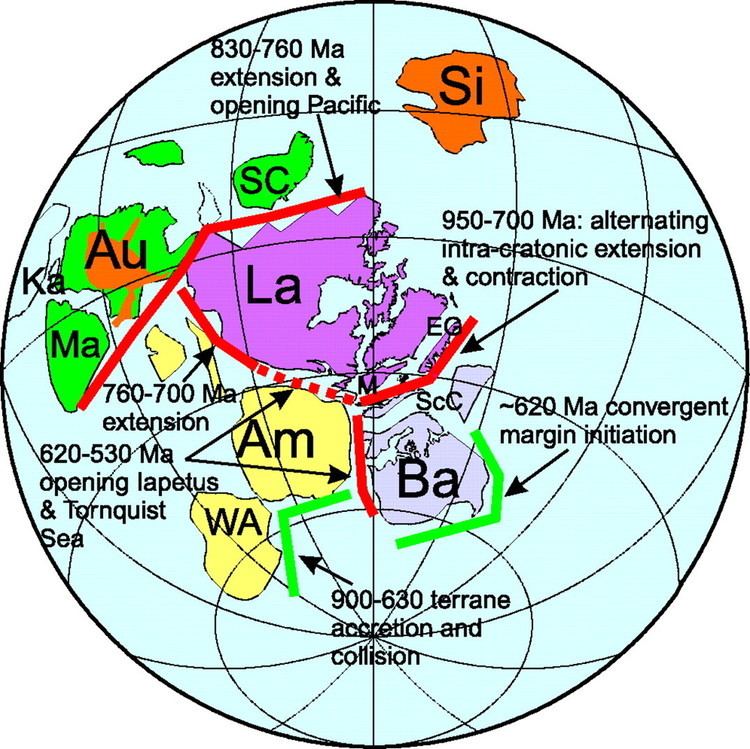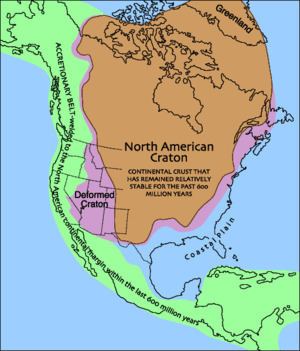 | ||
Laurentia liebe laurentia mein kinderlieder zum mitsingen sing kinderlieder
Laurentia or the North American Craton is a large continental craton that forms the ancient geological core of the North American continent. Many times in its past, Laurentia has been a separate continent as it is now in the form of North America, although originally it also included the cratonic areas of Greenland and also the northwestern part of Scotland, known as the Hebridean Terrane. During other times in its past, Laurentia has been part of larger continents and supercontinents and itself consists of many smaller terranes assembled on a network of Early Proterozoic orogenic belts. Small microcontinents and oceanic islands collided with and sutured onto the ever-growing Laurentia, and together formed the stable Precambrian craton seen today.
Contents
- Laurentia liebe laurentia mein kinderlieder zum mitsingen sing kinderlieder
- Laurentia
- Interior platform
- Tectonic setting
- Volcanism
- Geological history
- References
The craton is named after the Laurentian Shield, which in turn is named after the Laurentian Mountains, which were named after the Saint Lawrence River which in turn was named after Lawrence of Rome.

Laurentia
Interior platform

In eastern and central Canada, much of the stable craton is exposed at the surface as the Canadian Shield; when subsurface extensions are considered, the wider term Laurentian Shield is more common, not least because large parts of the structure extend outside Canada. In the United States, the craton bedrock is covered with sedimentary rocks of the interior platform in the Midwest and Great Plains regions and only in northern Minnesota, Wisconsin, the Adirondacks of New York and the Upper Peninsula of Michigan is the craton bedrock exposed. The sequence of rocks varies from about 1,000 to in excess of 6,100 m (3,500–20,000 ft) in thickness. The cratonic rocks are metamorphic and igneous, while the overlying sedimentary rocks are composed mostly of limestones, sandstones, and shales. These sedimentary rocks were deposited from 650 to 290 million years ago.
Tectonic setting
The metamorphic and igneous rocks of the "basement complex" of Laurentia were formed 1.5 to 1.0 billion years ago in a tectonically active setting. The younger sedimentary rocks that were deposited on top of this basement complex were formed in a setting of quiet marine and river waters. During much of Mississippian time, the craton was the site of an extensive marine carbonate platform on which mainly limestones and some dolostones and evaporites were deposited. This platform extended either from the present Appalachian Mountains or Mississippi Valley to the present Great Basin. The craton was covered by shallow, warm, tropical epicontinental or epicratonic sea (meaning literally "on the craton") that had maximum depths of only about 60 m (200 ft) at the shelf edge. During Cretaceous times, such a sea, the Western Interior Seaway, ran from the Gulf of Mexico to the Arctic Ocean, dividing North America into eastern and western land masses. Sometimes, land masses or mountain chains rose up on the distant edges of the craton and then eroded down, shedding their sand across the landscape.
Volcanism

The southwestern portion of Laurentia consists of Precambrian basement rocks deformed by continental collisions (violet area of the image above). This area has been subjected to considerable rifting as the Basin and Range Province and has been stretched up to 100% of its original width. The area contains numerous large volcanic eruptions.
